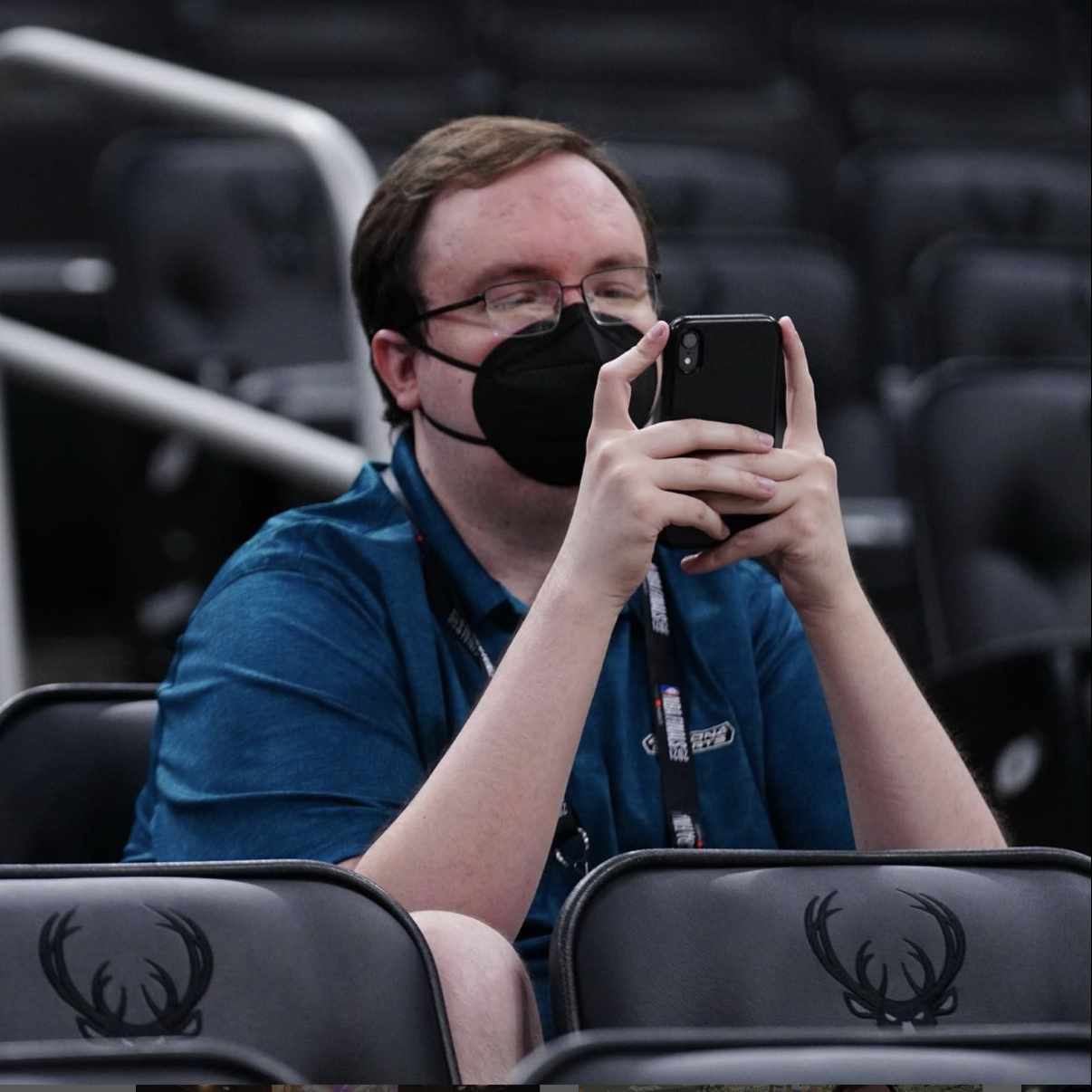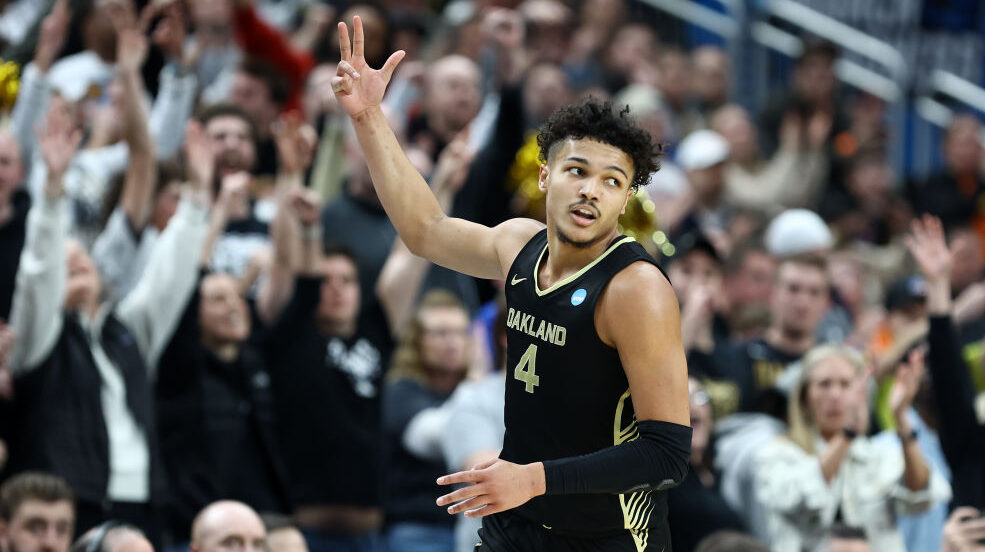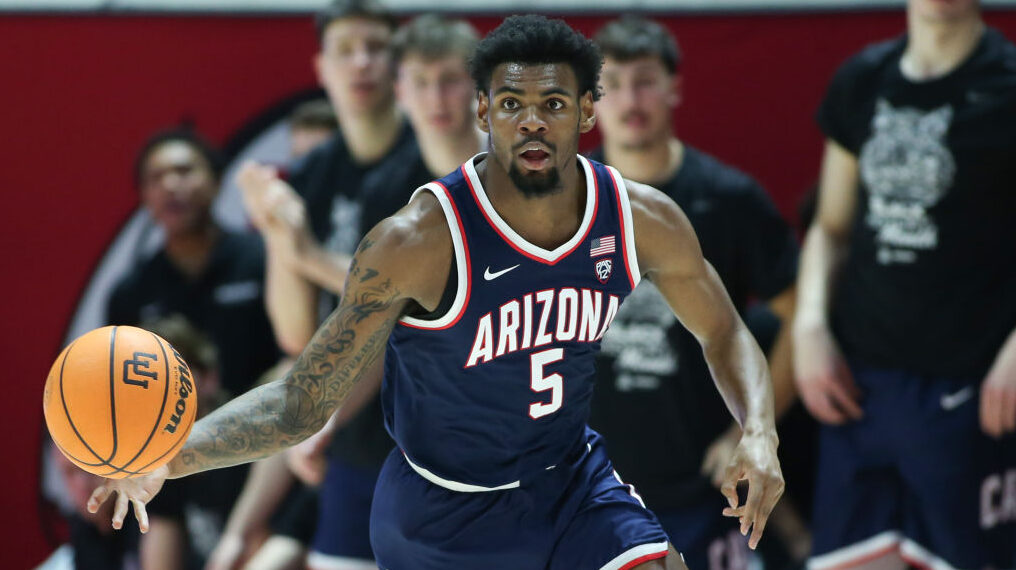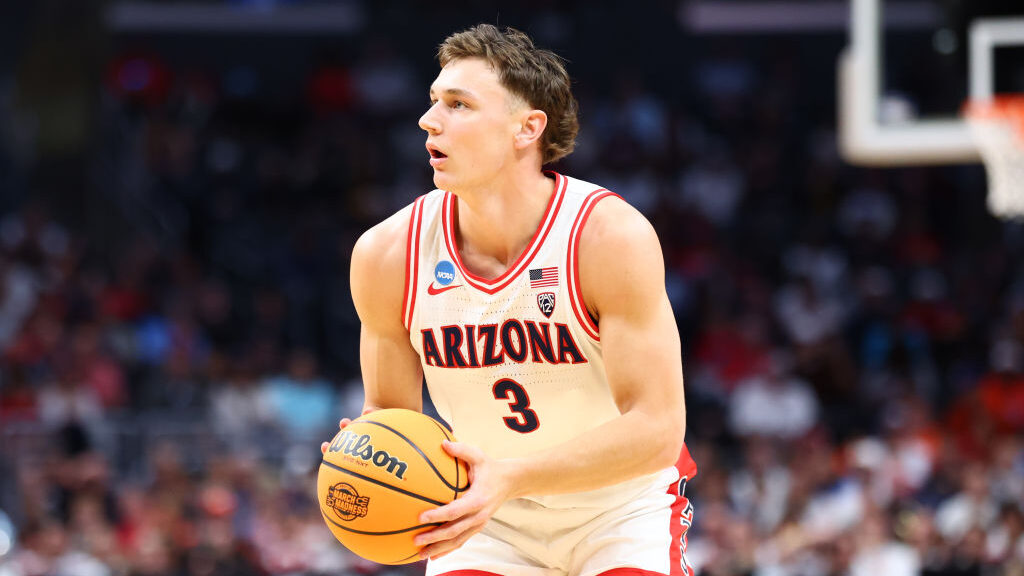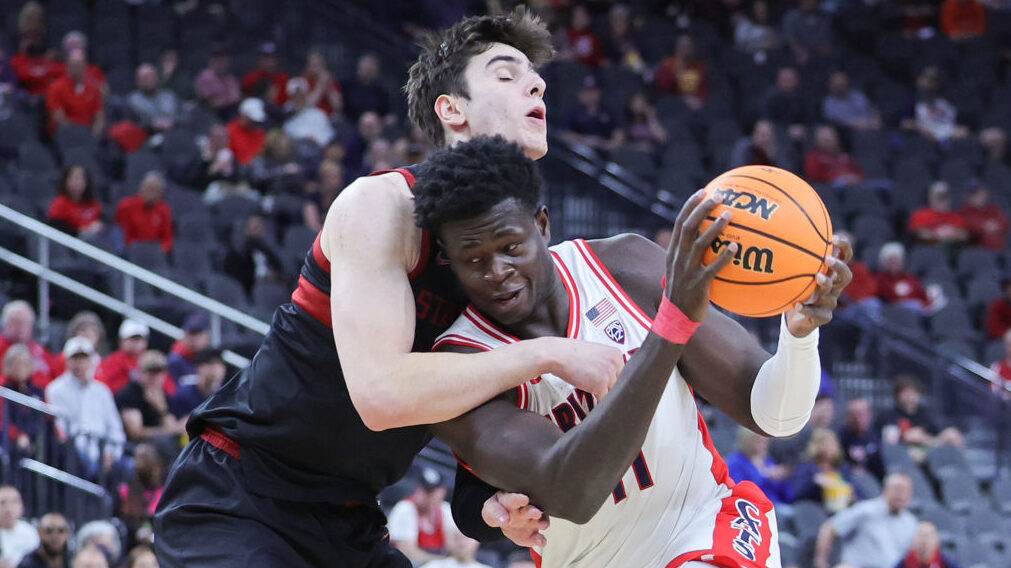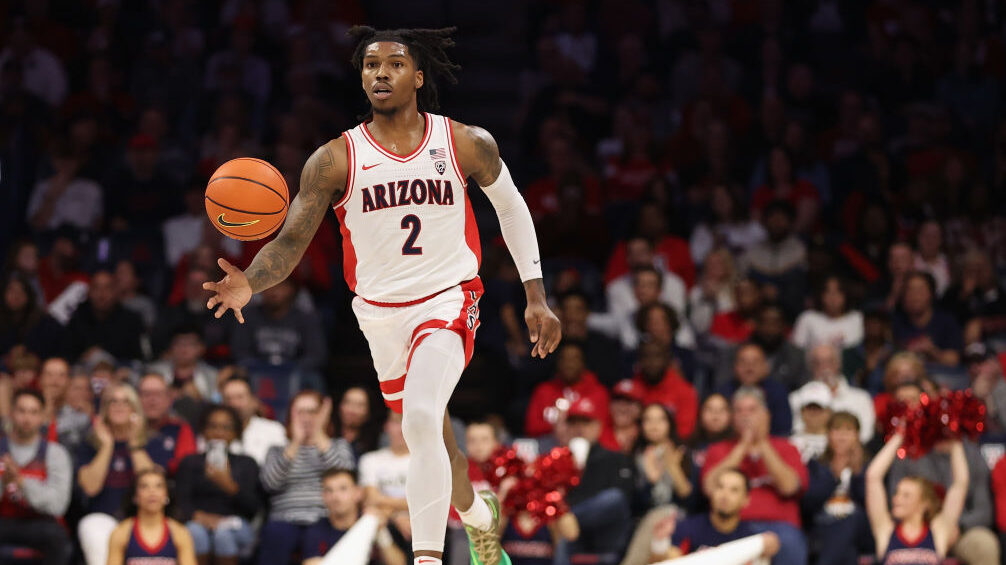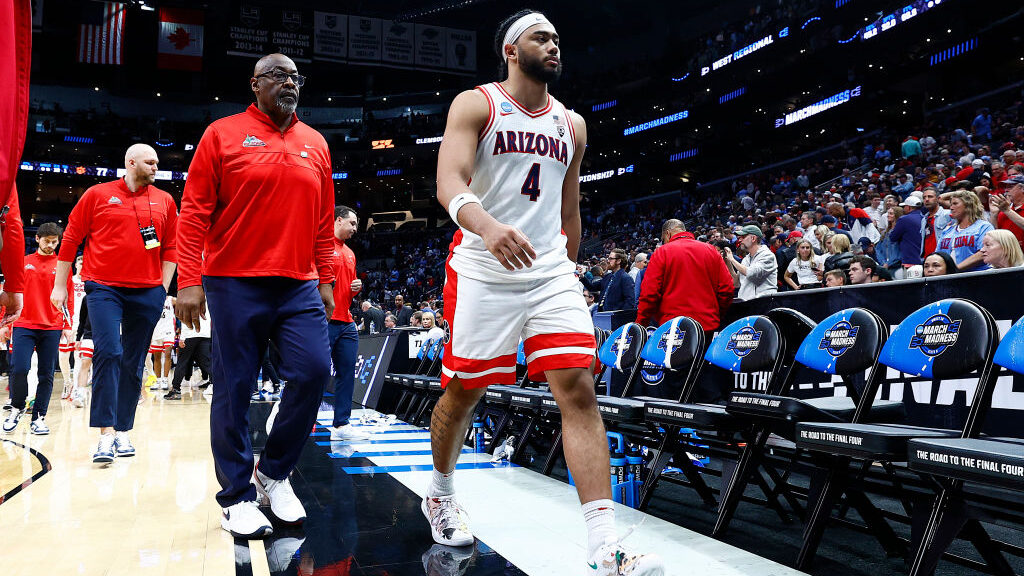3 keys for Arizona Wildcats in Sweet 16 matchup with Houston Cougars
Mar 24, 2022, 7:03 AM | Updated: 10:32 am
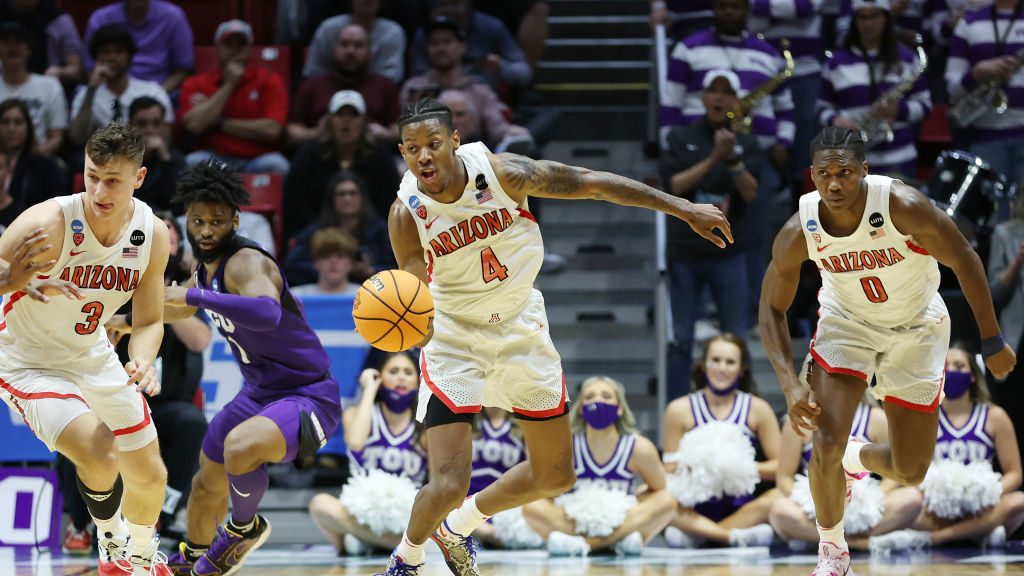
Dalen Terry #4 of the Arizona Wildcats dribbles during the second half against the TCU Horned Frogs in the second round game of the 2022 NCAA Men's Basketball Tournament at Viejas Arena at San Diego State University on March 20, 2022 in San Diego, California. (Photo by Sean M. Haffey/Getty Images)
(Photo by Sean M. Haffey/Getty Images)
The top-seeded Arizona Wildcats were not given a fortuitous draw in their quest for the program’s first Final Four appearance since 2001.
No. 5 seed Houston is one of America’s best teams, ranking second overall on KenPom.com coming into Thursday night’s Sweet 16 showdown with Arizona. Vegas agrees, placing the Wildcats somewhere between a one-to-two-point favorite, depending on what sportsbook you gander at despite Arizona’s status as a 33-3 squad.
It’s a matchup that follows a pair of underwhelming performances for Arizona in the NCAA Tournament’s first two rounds.
Here are a few things that need to change in order for the Wildcats to advance to the Elite 8.
Win the glass and pace battle
The main thing to understand about the Cougars is that they win by making other teams beat themselves.
Houston ranks No. 1 in the country in the percentage of its misses it rebounds, per teamrankings.com. It offensive rebounds a whopping 37.8%, an even better mark than TCU mustered before facing Arizona, and good for 13.3 offensive rebounds per game.
The Horned Frogs had 20 on Sunday against Arizona, and it’s not as simple as, “jUsT BoX oUt.” It’s more about a group mentality of gang rebounding, meaning players on the perimeter need to be racking up rebounds. Sophomore guards Bennedict Mathurin (8 rebounds) and Pelle Larsson (6) combined for 14 in the second round and the Wildcats will need more of that on Thursday.
Like Sunday, this is not a gargantuan Houston squad. It plays 6-foot-11 senior center Josh Carlton only 21.8 minutes per game and elsewhere in the rotation are players 6-foot-8 and shorter. The Wildcats center duo of 7-foot-1 Christian Koloko and 7-foot Oumar Ballo need to take care of business down there, and ditto for 6-foot-11 sophomore power forward Azuolas Tubelis.
That mentality comes with everything. Defensive rebounding, rim protection, finishing on the other end, etc. The Wildcats know how to maximize their edge in size and it’s on that trio to do so like Koloko did on Sunday.
There’s also the fact that different teams send a different amount of players to the offensive glass, because if it’s too many, that leaves a squad vulnerable in transition.
That’s where it’ll be crucial for Arizona to not only get the rebound but go once the ball is secured. TCU kept having a player or two that didn’t come up successful on the glass pester the ball-handler and delay the possession starting by just a few seconds. Arizona can’t get rattled by that.
To that point, sophomore point guard Kerr Kriisa was great on Sunday because he was one of the few to be cool, calm and collected. Yes, he shot 1-of-10 in returning from an ankle sprain. He also was +24 in 27 minutes because he was the one guy consistently pushing the pace offensively and keeping the opposing defense on the back foot. Kriisa proved a lot in those crunch-time possessions with the game on the line by playing within himself and not forcing anything while still applying that aforementioned pressure.
That was a relative unknown coming into the tournament considering Kriisa’s reputation for being one of the wildest players in America, but he’s the engine of the team and Arizona is much, much better when Kriisa plays. With him getting a couple more days to rest his injured right ankle, Kriisa should benefit the team even more in that aspect as well as the next one.
Execute offensively
If you tuned in for Arizona’s first two games of the tournament expecting to see the nation’s best passing team, you must have been rather mystified.
The majority of the Wildcats’ ball-handlers were spooked, particularly against TCU’s aggression and size on the perimeter. But even in the first round against 16th-seeded Wright State, Arizona had 19 turnovers before its even (and poor) ratio of 16 assists and 16 turnovers in the win over the Horned Frogs.
Senior guard Justin Kier, Larsson and Tubelis looked overwhelmed by the moment of their first NCAA Tournament. Even Mathurin, who was spectacular on Sunday, played tentatively at times and settled for his jumper quite a bit.
Houston is a better TCU in many ways, including at forcing turnovers, where it is 30th in the country in the percentage of its defensive possessions it turns into takeaways, per teamrankings.com.
The Cougars don’t play in transition often and they need every ounce they squeeze out of other areas to score more points, like off live-ball turnovers.
Additionally, Houston’s percentage of shots it allows at the rim is a stellar 340th out of the NCAA’s 358 teams, according to Hoop-Math. Where that balances out is the Cougars giving up 42.9% of their total shots from 3-point range, a mark that ranks 35th.
Essentially, the game very well could come down to the Wildcats’ ball rotations and whether those are turnovers or good looks from 3. Those jumpers will need to fall too. While the Wildcats will have a size advantage inside, Ballo and Koloko will likely be doubled for most of the night.
The drive-and-kick game for Mathurin, Kier, Kriisa and sophomore wing Dalen Terry needs to be on point like it has been for the majority of the season.
Loosen up
Houston’s a fairly average offensive team and lost its firepower due to in-season injuries for guards Marcus Sasser and Tramon Mark. It has a terrible rate of creating shots at the rim but is sixth in the country at its efficiency there and fifth in the percentage of those baskets it assists, according to Hoop-Math.
The Cougars have solid shooting percentages on two-point jumpers and three-pointers but nothing overwhelming. They’ve reached at least 80 points in 12 of their 36 games compared to 28 of 36 for Arizona.
If you let Houston get those shots at the rim, it is more than capable of setting them up and converting. It has a few shot-makers too in guards Kyler Edwards, Taze Moore and Jamal Shead.
But again, it will not blow the Wildcats out of the water. There will be no 14-0 run in four minutes that suffocates Arizona from there.
It all comes back to the Wildcats getting back to their signature style of free-flowing, fast-paced basketball that made head coach Tommy Lloyd such a huge success story in Tucson. Arizona’s balanced roster means nothing if half of its rotation is not playing well.
In simpler terms, if Arizona plays like it did in either game from last weekend, it will lose.
It would be shocking to see Houston become fazed by the moment like the Wildcats have been so far. Cougars forward Fabian White Jr. and Edwards, the leading scorers on the team since Sasser’s injury, had a combined 18 games of NCAA Tournament experience coming into this one. Arizona’s starting five didn’t have one.
We will find out if that’s going to be a factor for Arizona’s third straight tourney game, and to go even bigger, we’ll see if the first weekend was just the Wildcats getting comfortable in March or an indicator that Lloyd’s style struggles against the best competition.

